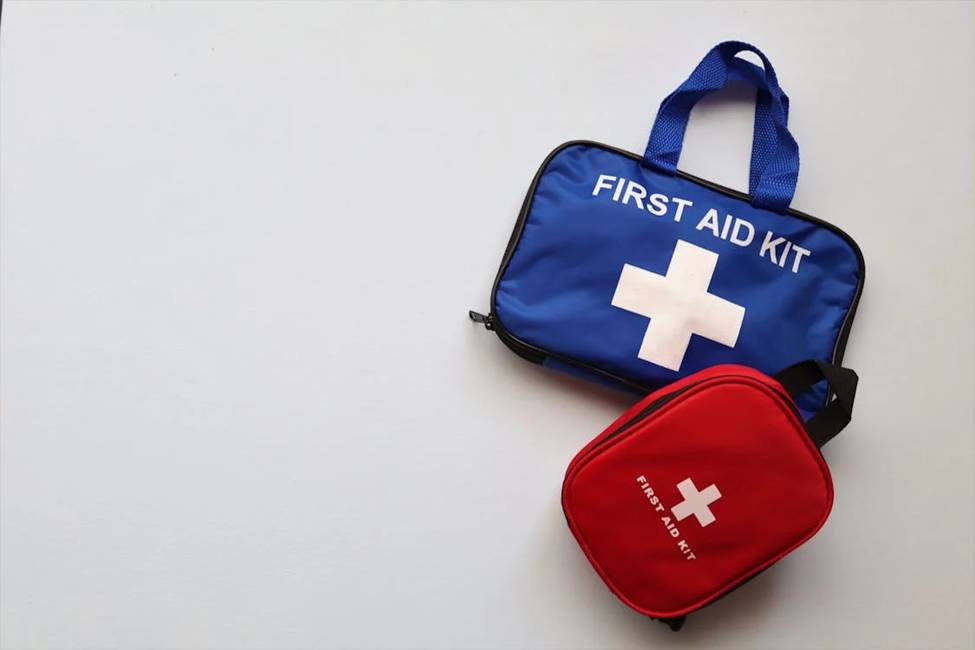What Every First Aid Kit Needs


Just what a first aid kit should contain is a matter of discretion and personal experience, but the truth is there’s going to be a lot of overlap no matter whom you ask.
And while there are pre-made first aid kits you can buy, you can also curate your own supplies to create your own. Here’s a good place to start.
And while there are pre-made first aid kits you can buy, you can also curate your own supplies to create your own. Here’s a good place to start.
- Adhesive bandages: Arguably the most fundamental of all first aid supplies, adhesive bandages of all shapes and sizes are necessary to seal a wound, promoting healing and discouraging infection.
- Gauze: Gauze can be used to clean a wound, to help stop bleeding, to apply topical treatment, and with medical tape, it can be used to improvise a bandage.
- Medical tape: Medical tape has innumerable uses, and they’re not all just for first aid. All the same, medical tape is specifically useful for improvising a bandage with gauze.
- Butterfly sutures: For larger, wider wounds, butterfly sutures can be used to hold the wound closed to help promote healing, reduce the risk of infection and minimize scarring.
- Q-tips: Q-tips are invaluable for applying topical treatments like disinfectant or antibacterial ointment.
- Topical disinfectant: There are many different sorts of topical disinfectants, including isopropyl alcohol, hydrogen peroxide, iodine treatments, and even antibacterial ointments. All of these are valuable in a first aid kit.
- Itch and sting relief: Topical itch and sting relief are often all that’s needed in the event of contact with a stinging plant or insect.
- OTC pain relief: Any good first aid kit should contain some basic OTC painkillers such as acetaminophen or ibuprofen.
- Burn relief: Burn relief gels can help soothe the pain of burns while lessening the risk of infection and promoting healing. Most are worth including in a first aid kit.
- Bleeding control powder: Along with a tourniquet (which should only be applied in life-threatening situations and only if you have proper knowledge of how to do so), bleeding control treatments like powders can be used to stop severe bleeding quickly, which can save a life.
- Alcohol pads: Alcohol pads are not just useful for topical disinfection, but also for cleaning the skin prior to applying bandages or other treatments.
- Vaseline: Petroleum jelly is not just useful for sealing wounds and helping to encourage healing; it can also soothe and moisturize dry, chapped skin.
- Instant cold packs: These can be used to provide inflammation and swelling relief to reduce pain, but they can also be used to help constrict blood flow to limit bleeding.
- Scissors: Scissors are not just useful for first aid, which is a good reason to keep them close; all the same they are vital for cutting and trimming bandages, gauze, tape, and other dressings.


- Tweezers: Tweezers afford a much greater degree of dexterity than you’d otherwise be able to exercise, giving you precise control for the removal of splinters, insect stings, and other foreign bodies that are difficult to handle. Tweezers can also be used to pick up contaminated dressings like bloody bandages.
- Rubber gloves: Rubber gloves protect the wearer from bodily fluids and will help keep the hands clean. In the realm of first aid, these are the most essential and basic of all personal protective equipment.
- A facemask: A facemask helps protect the wearer against transmission of airborne diseases and also reduce the risk of infection.
- An eye shield: Eye shields are also a vital piece of personal protective equipment and can be used to protect both victims as well as administrators of first aid.
- Thermometer: Useful for taking temperatures to gauge the condition of an afflicted individual.
- Emergency blanket: Emergency blankets, which are also called survival blankets, are both compact and lightweight, but can be an effective first treatment for those suffering from hypothermia.
- Flashlight: These are indispensable for general utility and should be included in any first aid kit. You can neither assess nor treat what you can’t see.
- A first aid manual: While it’s beneficial to have a decent working knowledge of basic first aid protocols, we can’t all know everything. A first aid manual can provide you with invaluable quick reference for treatment both common maladies and more severe injuries.
Is this list comprehensive? Far from it. Any well-stocked first aid kit will contain far more than what’s been mentioned here. All the same, this is a good place to start if you’re looking for what to include if you assemble your own kit.


Explore Prepared First Aid Kits Here
Don’t have the time to assemble your own first aid kit from scratch? Shop our collection of disaster survival gear and get a pre-made, prepared first aid kit from our collection. We carry a wide range of emergency medical supplies for first aid, and a whole lot more. Shop our collection and get what you need today.